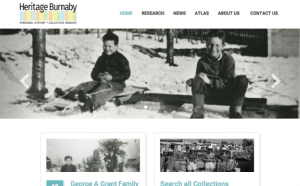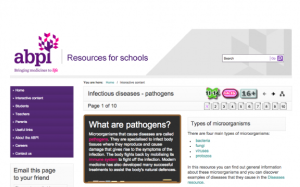General Interest
Back to Top
|
 |
|
Larry Summers' Blog
|
Social studies |
|
Larry Summers has built an impressive resume as one of the world's most prominent economists. He has been a professor at Harvard, the Chief Economist at the World Bank, Deputy Secretary for International Affairs of the United States Department of the Treasury, and, from 2001 to 2006, president of Harvard University. Since 2010, he has also written extensively about domestic economic policy for news outlets such as the Financial Times, the New York Times, and the Washington Post. For readers who enjoy a pro-business, empirically derived economics, Mr. Summers' blog will bring hours of intellectual fulfillment. Whether he is writing about his views on the Fed's secular stagnation, elucidating his differences of opinion with fellow economist, Paul Krugman, or explaining why Ukraine's debt could affect American economic growth, Mr. Summers writes with clarity and erudition. [CNH] |
|





|
|
 |
|
 |
|
Home Movie Registry
|
Arts |
|
Since the 1920s, home movies have been produced by everyday people, documenting daily activities and offering a wealth of information about twentieth century American life. The Home Movie Registry, a curated search engine from the Center for Home Movies (CHM), is an innovative project designed to bring together the swarth of amateur films digitized and collected by participating archives. The About section of the site details the portal's extensive efforts and provides useful context. From there, readers may like to explore the two Exhibits currently featured on the site, one of which highlights Home Movies and the African American Community, while the other provides a look at Home Movies and Television. Readers may also simply scroll down the fascinating list of amateur-made films on the home page, which illuminate such ephemera as a 1950s Chicago picnic and a 1975 homemade travel documentary. For more targeted research, historians, artists, documentarians, students, and others will find an excellent search bar for easy filtering through the Registry's video troves. [CNH] |
|





|
|
 |
|
The Bigger Picture
|
Social studies |
|
This blog from the Smithsonian Institution Archives explores the various people, research, programs, and wonders of the Smithsonian's holdings - a rich cultural repository that began in 1846 and continues to this day. Aptly titled The Bigger Picture, the blog invites readers piece-by-piece into the vast landscape of the Smithsonian Archives. Entries vary in scope, highlighting interesting artifacts, detailing the challenges and benefits of working with the Institution's collections, or offering tips to readers on how to manage their own personal collections. Recent entries have included a photograph of the earth taken from NASA's Lunar Reconnaissance Orbiter, a short entry about the 1977-78 public "sketch-ins" of Alice the Spider Monkey at the National Zoological Park, and a video entry on the "test tube puppies" that may hold a key to breeding endangered species. The blog succeeds at documenting multiple perspectives on the cultural impact of archives, and entries date back to January 2009. [CNH] |
|





|
|
 |
|
The National Human Genome Research Institute: Fact Sheets
|
Science |
|
The National Human Genome Research Institute (NHGRI) at the National Institute of Health (NIH) was established in 1989 for the express purpose of contributing to the International Human Genome Project - the multi-nation, decade-long project that successfully mapped the human genome. With such a rich pedigree it is no surprise that the NHGRI boasts a wonderfully informative website. Take, for instance, the Fact Sheets on Science, Research, Ethics and the Institute, featured here. Readers will find well over a dozen fact sheets, covering topics such as Comparative Genomics, Cloning, DNA Sequencing, and Genetic Mapping. For readers who are looking for clearly written, compendious treatments of all things related to genetics research, the NHGRI site will not disappoint. [CNH] |
|





|
|
 |
|
The Alan Lomax Sound Archive Online
|
Arts |
|
Born in Austin, Texas in 1915, Alan Lomax was a folklorist, ethnomusicologist, and musician who traveled the United States and the world recording the performances of thousands of musicians, from Jelly Roll Morton and Woody Guthrie to little known folk singers in Haiti. On the Alan Lomax Sound Archive Online readers will find over 17,400 digital audio files, starting with Lomax's 1946 tape recordings and culminating in his late career recordings before his death in 2002. After absorbing the informative introduction on the landing page, readers may like to select the Sound Collections Guide icon to gain access to such highlights as the 1946 Calypso Concert, as well as recordings from Lomax's trip to Morocco in 1967, his travels in the Soviet occupied Central Asia in 1964, and many other treasures. For anyone fascinated by the world's folk music, the Alan Lomax archives are a source of wonders. [CNH] |
|





|
|
 |
|
Food Politics
|
Health |
|
Marion Nestle is Paulette Goddard Professor in the Department of Nutrition, Food Studies, and Public Health at New York University. Besides chairing that department for nearly a decade, she has held academic positions at Cornell University, Brandeis University, and the UCSF School of Medicine and has published five award-winning books on the topic of food safety and food politics. In addition to her many academic and advocacy roles, Dr. Nestle also publishes this regular blog, Food Politics. Recent posts have tackled questions around the FDA's definition of what foods can be called "natural," reviews of food-related books, and a very well-publicized running count of industry-sponsored studies with results favorable to the sponsor. This last effort, which has counted a score of 95 to 9 in favor of sponsors since last March, has garnered critical acclaim and impacted the way many industry insiders look at the formerly trusted peer review process. [CNH] |
|





|
|
 |
|
Heritage Burnaby
|
Social studies |
|
Take a virtual trip to Canada for this excellent example of digital local history. A collaboration between a set of City of Burnaby, British Columbia local government institutions, including the public library, city clerk's office, and archives, Heritage Burnaby "represents all of the community assets, heritage services and historic collections managed by the City of Burnaby." Since Burnaby was first incorporated in 1892, this means that there is a rich collection at the website. The Research menu choice leads to the main search options: by collection, neighbourhood, or project. Searches can be further limited by type of material, such as photographs, moving images, textual records, or physical artifacts. Selecting Search under any of the listed material types provides a list of all the items in that category, which can be a handy way to start exploring what's there. Another great feature is the Atlas, which allows a visitor to map change across the decades in both Burnaby's natural environment and its buildings and landmarks. [DS] |
|





|
|
























